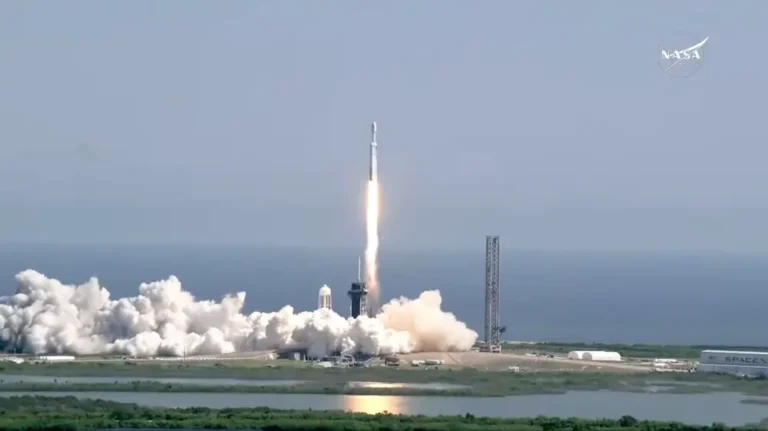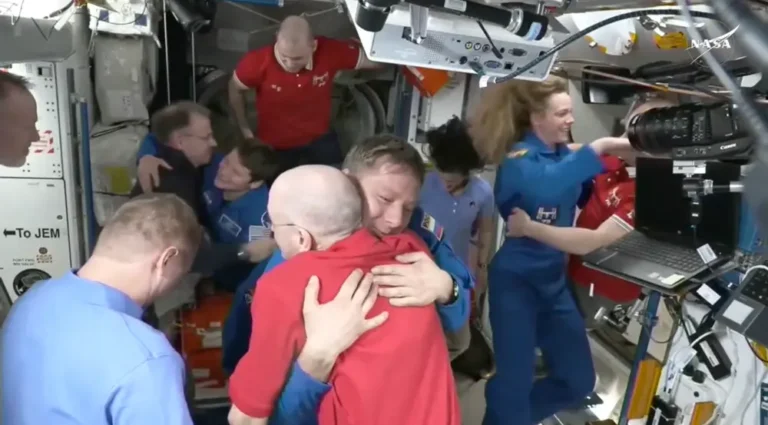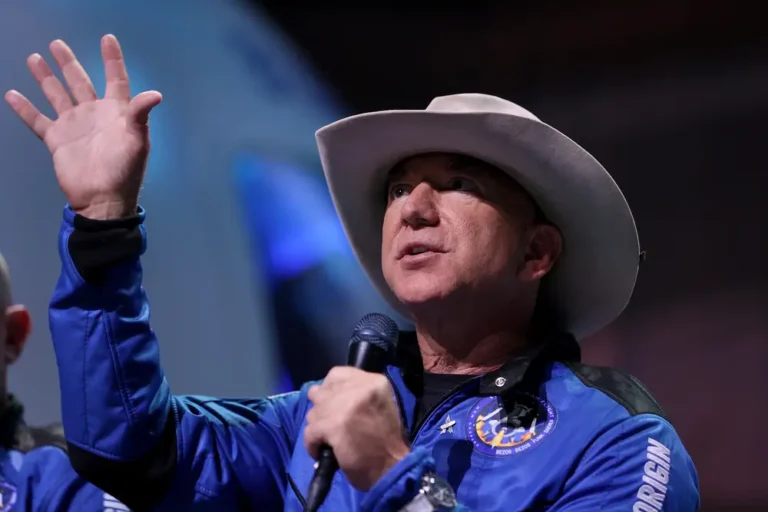SpaceX’s Polaris Dawn mission nails the first-ever commercial spacewalk

Jared Isaacman performed mobility tests during the historic spacewalk.
Floating in the black void of space, a billionaire-backed SpaceX mission attempted a daring, first-of-its-kind feat Thursday morning.
Four people orbiting Earth in a SpaceX Crew Dragon spaceship donned a set of brand-new spacesuits, opened the ship’s hatch to expose its interior to the vacuum of space, and completed the first-ever commercial spacewalk.
Their week-long mission, called Polaris Dawn, is fully private with no NASA involvement — but it’s no billionaire joyride.
This spacewalk was a critical test of the technical abilities — like suit mobility, hand-body coordination, and extravehicular operations — that SpaceX will need to achieve Elon Musk’s ultimate goal of building a city on Mars.
Watch as Jared Isaacman, the mission’s billionaire benefactor and commander, exits the Crew Dragon spaceship, overlooking a stunning view of Earth from 458 miles away:
SpaceX and the Polaris Dawn crew have completed the first commercial spacewalk!
“SpaceX, back at home we all have a lot of work to do, but from here, Earth sure looks like a perfect world.” — Mission Commander @rookisaacman during Dragon egress and seeing our planet from ~738 km pic.twitter.com/lRczSv5i4k
— Polaris (@PolarisProgram) September 12, 2024
Even though only two performed the spacewalk, the entire crew drifted in the vacuum of space, wearing new spacesuits that hadn’t been tested in orbit yet. The stakes were high.
It was also a risky feat for all four Polaris Dawn crew members: Isaacman; Anna Menon and Sarah Gillis, two SpaceX engineers; and Scott Poteet, a retired Air Force pilot who previously led strategy at Isaacman’s company Shift4.
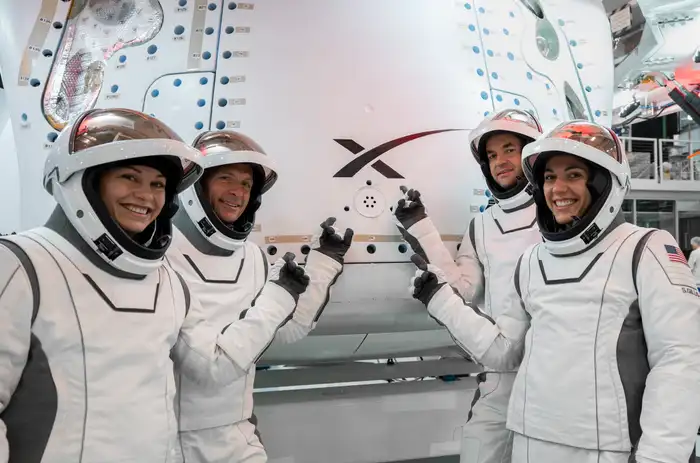
The Polaris Dawn crew: Anna Menon, Scott Poteet, Jared Isaacman, and Sarah Gillis.
“I know that they take safety very seriously,” Leroy Chiao, a retired NASA astronaut who has spent more than 36 hours on spacewalks and consulted for SpaceX on its Safety Advisory Panel for 12 years, told B-17 ahead of the spacewalk in an email.
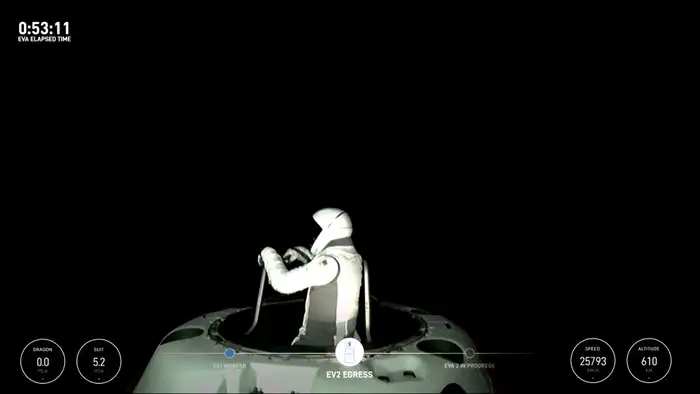
Sarah Gillis performs mobility exercises outside the spacecraft.
He added that SpaceX knows any mishap would “seriously impact” commercial human spaceflight, “if not kill it.”
But the spacewalk went off without a hitch, according to SpaceX. At 7:55 a.m. ET Thursday, SpaceX announced on X that the spacecraft’s repressurization was complete, marking a safe end to the spacewalk mission.
SpaceX livestreamed the spacewalk. You can watch the entire event on X.
The Polaris Dawn spacewalk plan
The spacewalk procedure began 48 hours before opening the Crew Dragon’s hatch, with a “pre-breathe.”
The two-day process slowly decreased the pressure in the spaceship’s cabin to eventually put the crew on 100% oxygen. That helped purge nitrogen from their blood and prevent a dangerous condition called “the bends.”

The Polaris Dawn crew open the hatch in preparation for their spacewalk.
This procedure is similar to one that astronauts on the International Space Station use before their spacewalks, although their pre-breathes only last a few hours because they do it in the confines of a small, contained airlock. Crew Dragon has no airlock, so the crew had to balance the pressure in the entire cabin with the pressure in the spacesuits to give everyone’s body an opportunity to adjust. Hence, a longer, 48-hour pre-breathe.
After the pre-breathe, the Polaris crew donned their new spacesuits — the first SpaceX has ever designed for spacewalks. Each spacesuit is connected to the spacecraft through an umbilical cord that provides what the astronauts need to survive, like power and air.
The crew then opened the spaceship’s hatch. Since there was no airlock, this exposed the entire vehicle’s cabin and crew to the vacuum of space.
The Polaris Dawn crew wearing spacesuits open the hatch of their spacecraft.
The Polaris Dawn crew open the hatch in preparation for their spacewalk. SpaceX
“You are taking on a lot of risk at that point,” Isaacman said in a briefing on August 19.
“You’re throwing away all the safety of your vehicle,” he added.
Then, Isaacman and Gillis left the spacecraft to perform tests on their spacesuits, but they always maintained contact with one of the many handrails added to the ship’s exterior for this mission. The other two — Menon and Poteet — stayed inside to provide support.

Jared Isaacman was the first member of the team to depart the spacecraft.
Isaacman was the first to depart the aircraft. He performed a series of mobility tests while looking down at the Earth below.
“Back at home we all have a lot of work to do, but from here Earth sure looks like a perfect world,” Isaacman said during the livestream.
After Isaacman returned to the spacecraft, Gillis departed and performed the same mobility tests. Shortly after, she returned to the spacecraft safely and closed the hatch.
The risks and stakes are high
The Polaris Dawn spacewalk strategy — no airlock, vehicle fully open to space — is not totally unprecedented. NASA’s Gemini and Apollo programs did the same thing.

Astronaut Mike Hopkins participates in a spacewalk at the International Space Station.
Abhi Tripathi, a former Dragon mission director at SpaceX, who now directs mission operations at UC Berkeley’s Space Sciences Laboratory, told B-17 ahead of the mission that the spaceship was designed “from the beginning” to withstand unplanned depressurization events.
Tripathi added that he doesn’t see “any special risks” with the spacewalk. In fact, he admitted to feeling a bit of “FOMO and jealousy” seeing his former colleagues, Menon and Gillis, go to space.
What’s more, SpaceX has spent two and a half years upgrading the Crew Dragon, testing it, and running simulations with the four crew members to prepare for this spacewalk.
Chiao also expressed confidence that the company has “thoroughly reviewed” its flight plans.
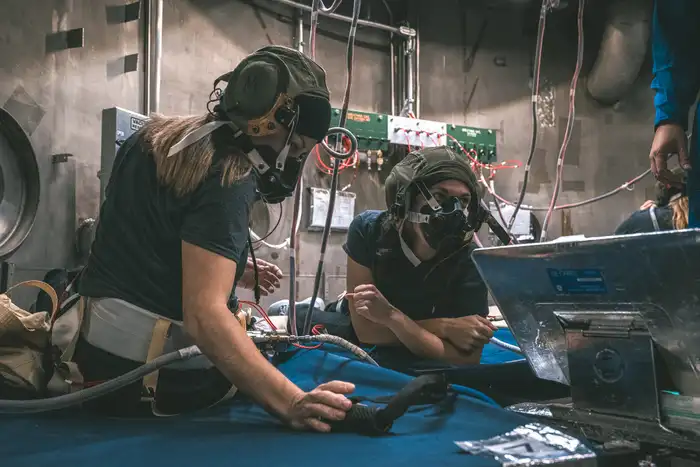
Polaris Dawn crew members train for their spacewalk pre-breathe.
But trying anything new in space is risky. And there were a lot of new factors to the plan: a 48-hour pre-breathe protocol, the spacesuits, the fact that a Crew Dragon spacewalk had never happened before, and the fact that all the crew members were new to spacewalking.
Isaacman previously flew to space in 2021 on another Crew Dragon flight he commissioned. Poteet was the mission director for that flight, called Inspiration4. Menon and Gillis have provided ground support for multiple SpaceX missions. None of them had ever been in the actual vacuum of space before, though, until this mission.
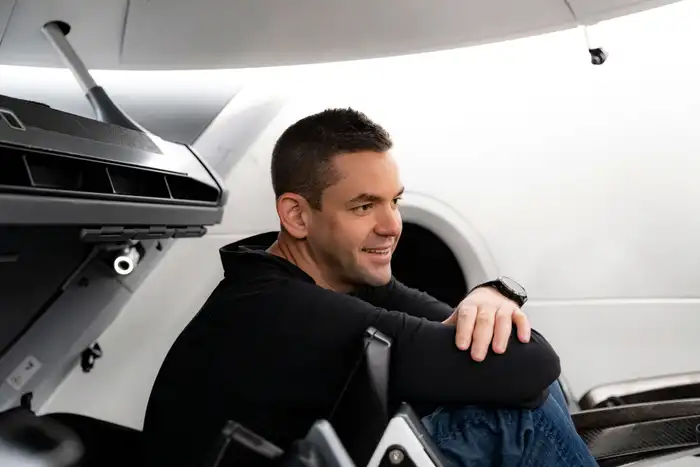
Jared Isaacman at SpaceX in Hawthorne, California.
“They will be testing a new suit with people who have never done this before,” Chiao said.
He added that depressurizing the entire cabin also added risk for the two people remaining inside. They were wearing spacesuits, too, but it was still a more precarious situation than sitting inside a sealed, pressurized, environmentally controlled spacecraft.
As with any space mission or spacewalk, there was also a risk that any one of the millions of bits of space debris orbiting Earth could impact the spacecraft and endanger its crew.
Tripathi previously worked in flight reliability at SpaceX, a division which is now led by Bill Gerstenmaier, who previously spent four decades overseeing various human spaceflight programs at NASA.
“I feel very comfortable that there’s maybe no better team in the world from a safety perspective than the folks that are trying to make sure every I is dotted and T’s are crossed at SpaceX,” Tripathi said.


